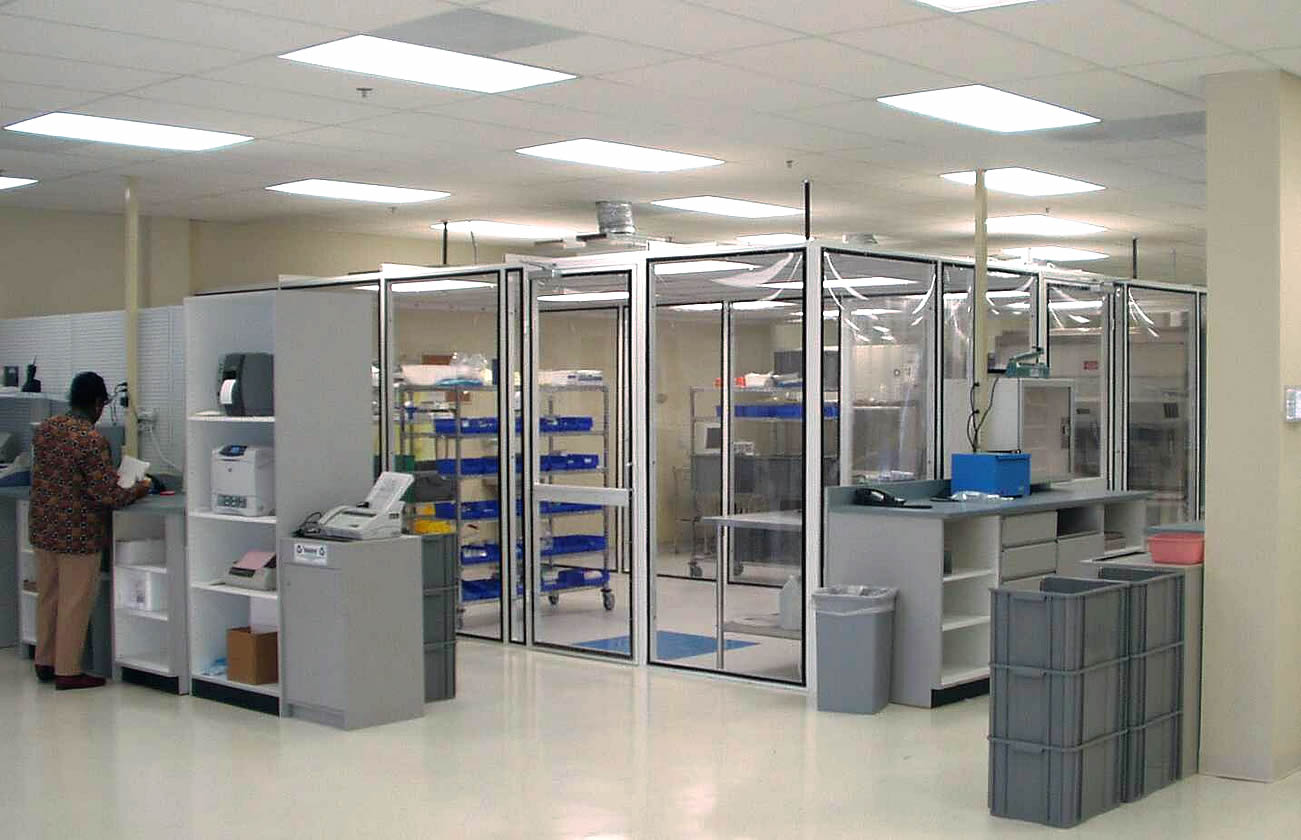Sterile compounding cleanrooms are specialized environments used for the preparation and handling of sterile medications. These cleanrooms are designed to meet strict standards for cleanliness and environmental control to ensure the safety and efficacy of the compounded medications.
Sterile Compounding Cleanroom Uses
 One of the primary regulatory bodies governing sterile compounding cleanrooms is the United States Pharmacopeia (USP). USP 797 is a set of guidelines that outlines the requirements for these cleanrooms, including the design, construction, and operation of these facilities.
One of the primary regulatory bodies governing sterile compounding cleanrooms is the United States Pharmacopeia (USP). USP 797 is a set of guidelines that outlines the requirements for these cleanrooms, including the design, construction, and operation of these facilities.
According to USP 797, sterile compounding cleanrooms must be designed and constructed in a way that minimizes the potential for contamination. This includes the use of materials that are resistant to bacteria and other contaminants, as well as proper ventilation and air filtration systems to remove contaminants from the air.
In terms of design, USP 797 specifies the minimum size and layout of sterile compounding cleanrooms. These requirements vary based on the type of sterile compounding being performed and the level of risk associated with the medication being prepared.
For example, a sterile compounding cleanroom used for high-risk medications, such as those administered intravenously, must meet stricter design requirements than a cleanroom used for low-risk medications, such as topical ointments.
In addition to design and construction requirements, USP 797 also outlines the necessary operational procedures for sterile compounding cleanrooms. These procedures include the use of personal protective equipment (PPE) for all personnel working in the cleanroom, as well as proper handling and storage of sterile medications and materials.
Other Notes
It is important to note that sterile compounding cleanrooms are not the same as general purpose cleanrooms, which are used for a variety of applications such as manufacturing and research. Sterile compounding cleanrooms are specifically designed and operated to meet the unique requirements of sterile medication preparation.
In order to maintain the required level of cleanliness and control in a sterile compounding cleanroom, it is important to follow a strict cleaning and maintenance schedule. This includes regularly cleaning and disinfecting surfaces, as well as regularly replacing air filters and performing maintenance on ventilation and air filtration systems.
